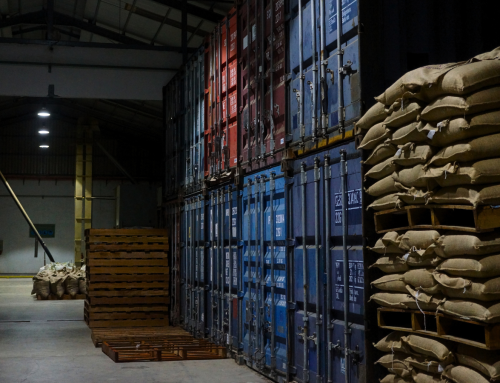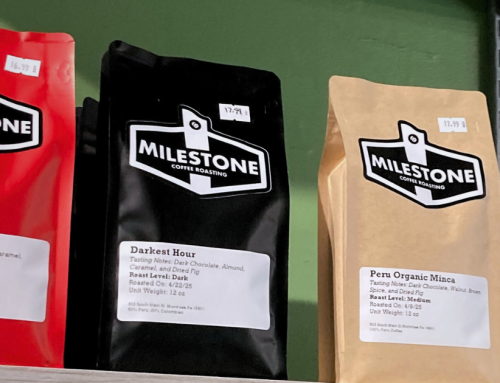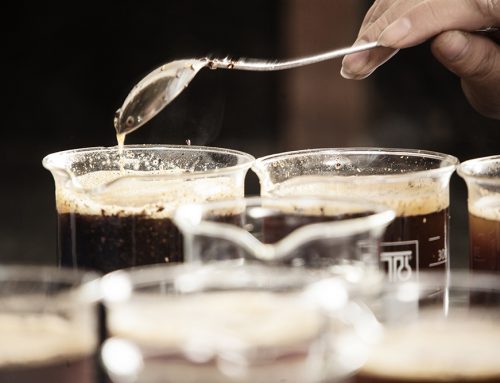In late July a severe frost hit Brazil’s coffee growing regions. Most affected were South de Minas and Parana. Yet another cold front hit the following week. These events caused extreme C-Market price gyrations — the coffee futures market – , affecting green coffee prices. The market roared up past 200 cts/lb, but has since dropped back down to 174.60 ct/lb (as of the writing of this post). These fluctuations are affecting all market participants: producers; roasters; green importers and speculators. Ultimately, these price changes will impact coffee drinkers.
With the market swinging and prices changing quickly, Coffee Roasters need answers and guidance. We asked Mauricio Jimenez (MJ), the General Manager and Green Buyer at Genuine Origin, to help us understand what’s going on and how to react to the market.
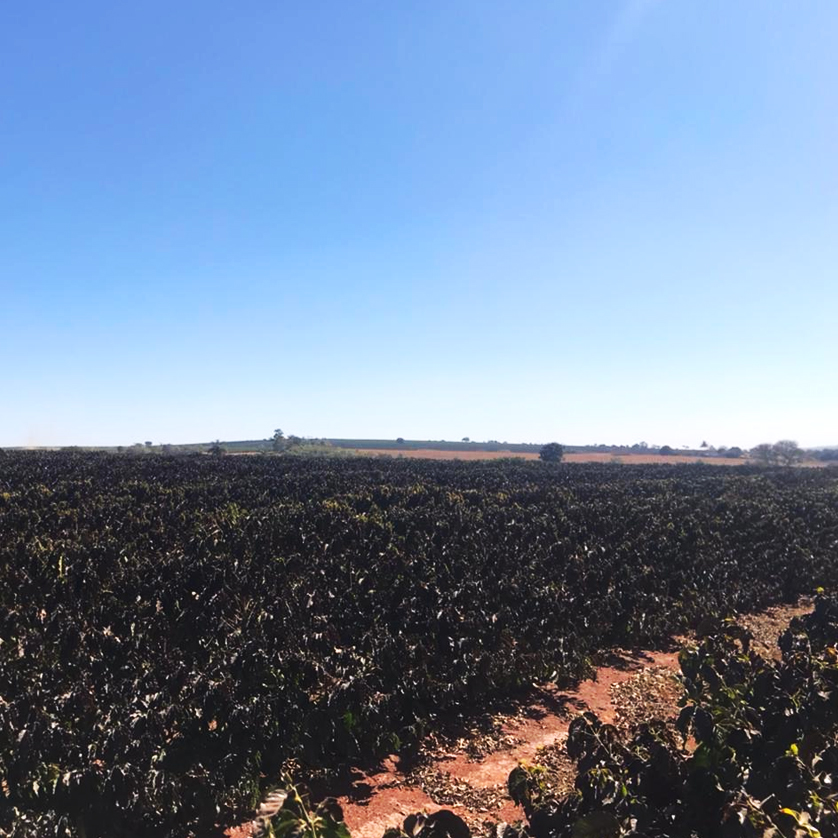
Frost damaged coffee field – Brazil July ’21
GO: The C-Market went way up, then retracted. What happened?
MJ: The frost in Brazil in late July led to a surge. Part of that surge seems like it had to do with the frost that was to follow. When the new cold front was not as bad as initially expected the market collapsed.
The market is always looking forward, when the first cold front hit in July the market went from the 150–160 range to 180–190. Then the second (late-July) cold front was severe; it took us to 215. But the second cold front was a classic “buy the rumors, and sell the news”. Once the second frost passed the market went back down.
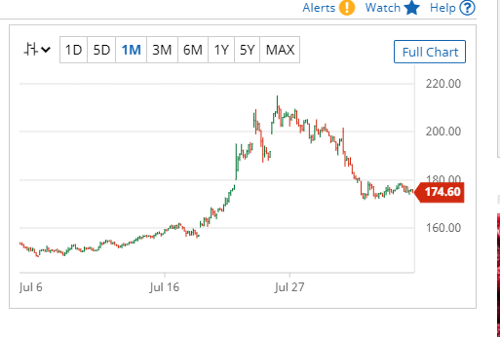
C-Market prices respond to Brazil frost
GO: What is the role of speculation in the C-market? What is open interest and the role of futures contracts in all of this?
Open interest refers to the total number of contracts that are open. In a futures contract you need a buyer and a seller. When the open interest grows it means that more people are interested in a market. Speculators are not necessarily the ones to blame for everything. Speculators serve a function: they provide liquidity, but sometimes they are trend followers. Their actions can exaggerate the market moves, but, at the end of the day ,the market will always find an equilibrium
The nature of coffee always generates exaggerated moves to the upside, and the downside. You don’t destroy demand by increasing prices a few days as prices take days to reach final consumers, and producers can not cut down their trees immediately as soon as the price goes below the cost of production… in a sense you need extended periods of low, and high prices to curve demand, and supply, and balance the complicated global supply chain.
GO: How high and low could the market go in a 6 month period?
MJ: Prices are cyclical. In the last 12 years we have seen the market break the 200 cts/lb mark during 3 periods, and the 300 cts/lb mark only once. On the low side, the market only went below 100 cts/lb once during this period. The market sometimes needs extreme swings to curve demand and supply of coffee.
GO: Do you expect more market volatility in the coming weeks or months? And are there any signals roasters should look for that precipitate those swings?
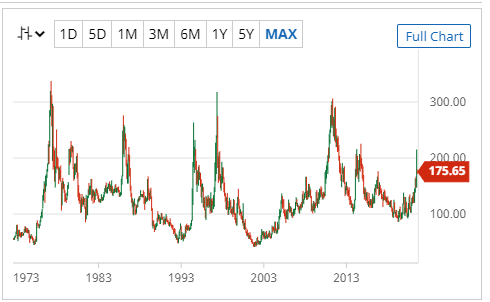
Historical C-Market prices 1973 – present
MJ: The market is going to keep us busy in the coming weeks. I wouldn’t be surprised to see more volatility. During the next few weeks and months market players will be looking at:
- How many hectares the Brazilian producers prune as consequence of the dry weather and the frost
- Rains during the next few months
- Flowering for the next harvest
- We also need to pay attention to the global logistics situation, and the demand behavior.
GO: Will Genuine Origin’s prices fluctuate with the market — whether it goes higher or lower?
MJ: Like most importers our prices will fluctuate as we continue to buy new coffees. If the C-Market goes higher or lower this will impact prices. That said, we try to minimize the changes because we understand that our customers value stability. But we need to balance competitive prices with paying higher market prices.
GO: What can roasters do to protect themselves against market shifts?
MJ: Roasters need to understand their business as much as possible. That means forecasting, planning, and acting accordingly. I would recommend buying as you go. Take advantage of GO’s free shipping with no minimum program and stock up as needed.
I also would not be afraid to raise your prices. Inflation is real, supply chain issues are real, market gyrations are real. If necessary, take the conversation to your consumers; explain to them that you are have to pay more to your suppliers — ultimately, the suppliers of your coffee are the farmers.
Finally, don’t panic. The market is dynamic. It is always changing and prices at current levels are healthy for producers, which, in the end, should result in a stronger coffee supply chain.
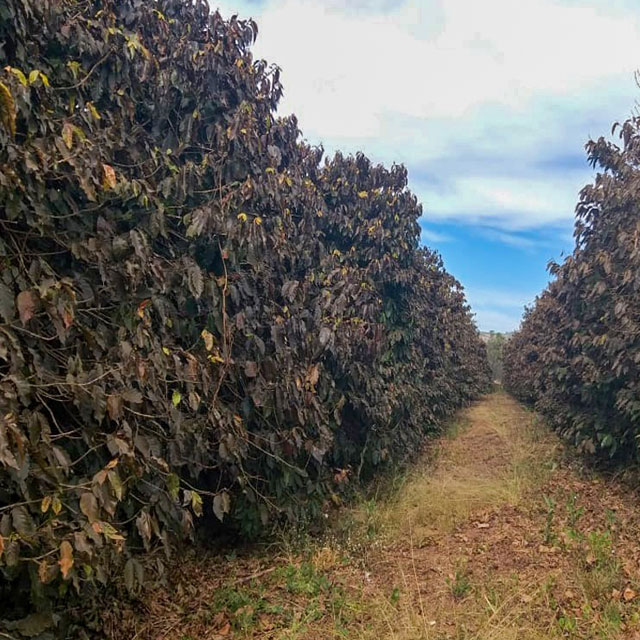
Frost-damaged coffee trees in Minas Gerais
GO: How are the farmers and families in Brazil doing after the frost? Will they be ok economically?
MJ: A coffee farm is kind of like a coffee roastery. You don’t build it for a few days. You invest in it for the long-term. Many producers will have to start from scratch and are not going to have a income from coffee during the next 2–3 years.
Many people think that coffee in brazil is only produced in large estates, and that is far from true. Many families are hurting, and on top of losing their production they have open contracts with exporters, cooperatives, and input manufacturers that they are not going to be able to fulfill for delivery in 2022, and 2023.
The Brazilian government just announced loans for coffee producers. Let’s hope it helps those farmers.
###
Copyright Genuine Origin
Find out more about our Brazilian coffee collection on our website — https://www.genuineorigin.com/brazil



